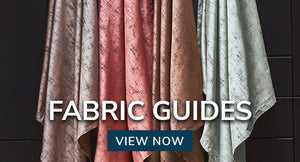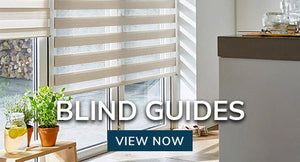Maximise natural light with these 5 blind ideas
One of the greatest advantages of window blinds is their ability to let natural light flood into your rooms. Unlike curtains and drapes they can be raised to the top of the window, as in the case of Roller and Roman blinds, or stacked back to the left or right of the window or door as in the case of vertical blinds, to expose the entire pane of glass, thus maximising the amount of light entering a room. Not only that, but there are ways you can utilise your blinds to make the most of natural light – such as choosing blinds which are light in colour to reflect natural light. Pair these with plenty of reflective surfaces and you’ll have plenty of light to play around with.
There are various types of blinds that let light in for you to choose from – including roman blinds, vertical blinds and venetian blinds. You may think it will prove difficult finding blinds that let light in but you can’t see in however there are plenty which both allow light in, and retain privacy such as venetian blinds.
Roman Blinds
Roman blinds have the flexibility to be raised to the top of the window, giving plenty of exposure to natural light. This type of window blinds always leave you with an amount of fabric showing as the fabric raises into neat folds. This chic window dressing offers a modern look that can be made from coloured and patterned fabric to compliment or coordinate with other soft furnishings within the room.

Sheer Blinds
Made in the same style as Roman blinds sheer blinds are constructed with high quality virtually transparent fabric, such as organza or voile. When pulled down diffused light fills the room during the day as sunlight filters through the fabric. Sheer blinds do not give privacy when lowered and an internal light source is used, as the fabric gives the appearance of shadowed transparency. Sheer Roman blinds are very useful when you need to help protect furnishings, furniture and floors from being damaged by strong, harsh sunlight and yet you don't want the room to become completely dark. Sheer blinds can also be in the form of a roller blind. The same principle applies, as in they function in the same way as a standard roller blind, but the fabric is lightweight and semi-transparent. This type of blind is ideal when you need privacy during the daytime and still want natural light to filter its way inside the room. When privacy is not required, they can be raised to the top of the window to maximise the amount of natural light.
Roller Blinds
Roller blinds are the ideal window dressing solution if you are looking to fill a room with as much natural light as possible. Raised to the top of the window almost all of the glass is exposed, allowing natural light to flood into the room.

Venetian Blinds
Although Venetian blinds can be raised to expose virtually all of the window's glass this isn't usually done, unless window cleaning is taking place. With the ability to alter the slats to horizontal, Venetian blinds allow plenty of light into a room and also have the added advantage of providing privacy from prying eyes. Angle the slats upwards and light will be sent onto the ceiling and reflected back into the room.
Vertical Blinds
Like their horizontal counterpart Venetian blinds, vertical blinds can be stacked back to expose nearly all of the window or door. This feature is especially relevant when vertical blinds are used on patio and French doors as this allows for easy exit and entry access. The vanes of vertical blinds can also be adjusted to open by means of the cord system. The thinnest part of the vane (the thickness of the material) only obstructs the window glass, so that plenty of light enters the room and yet privacy is maintained.




























































